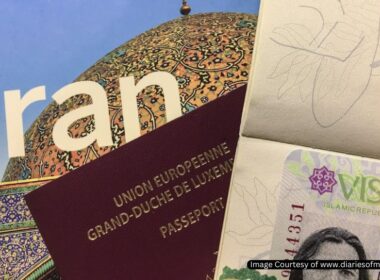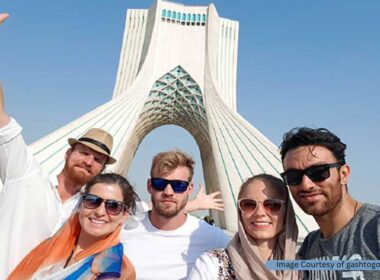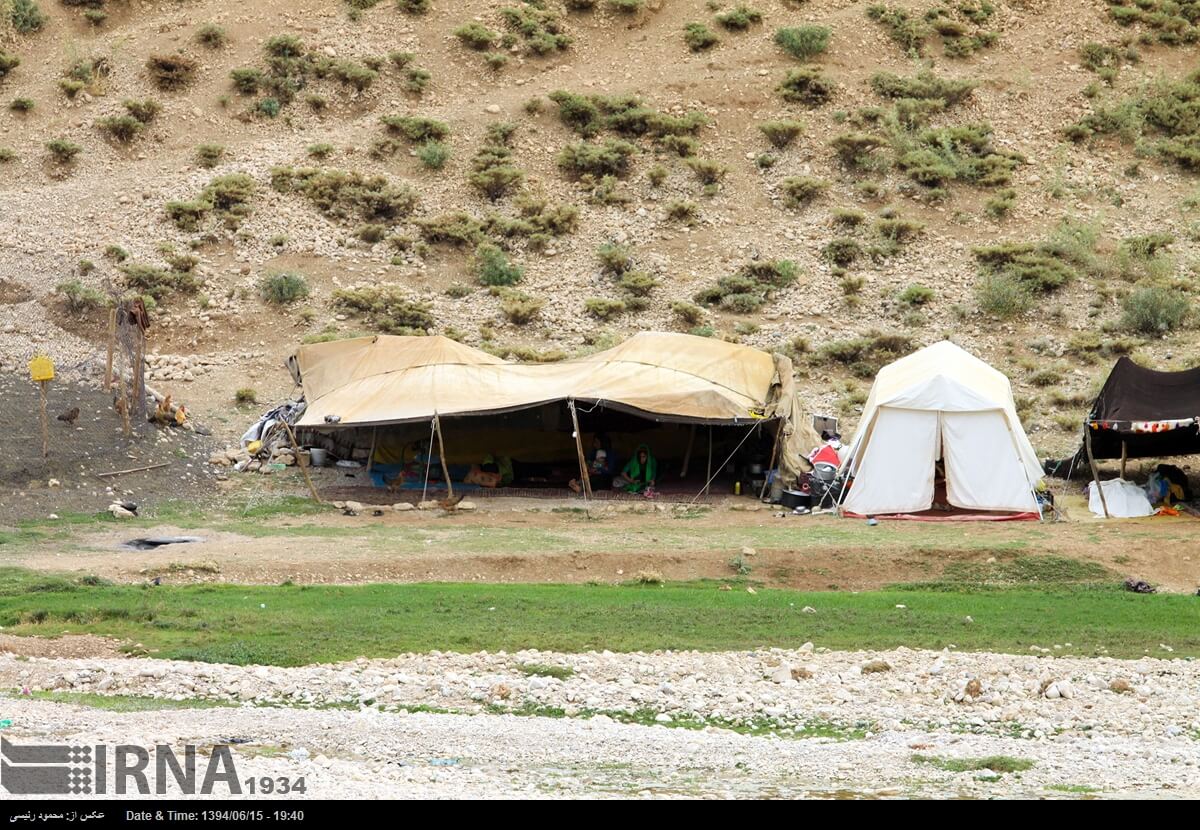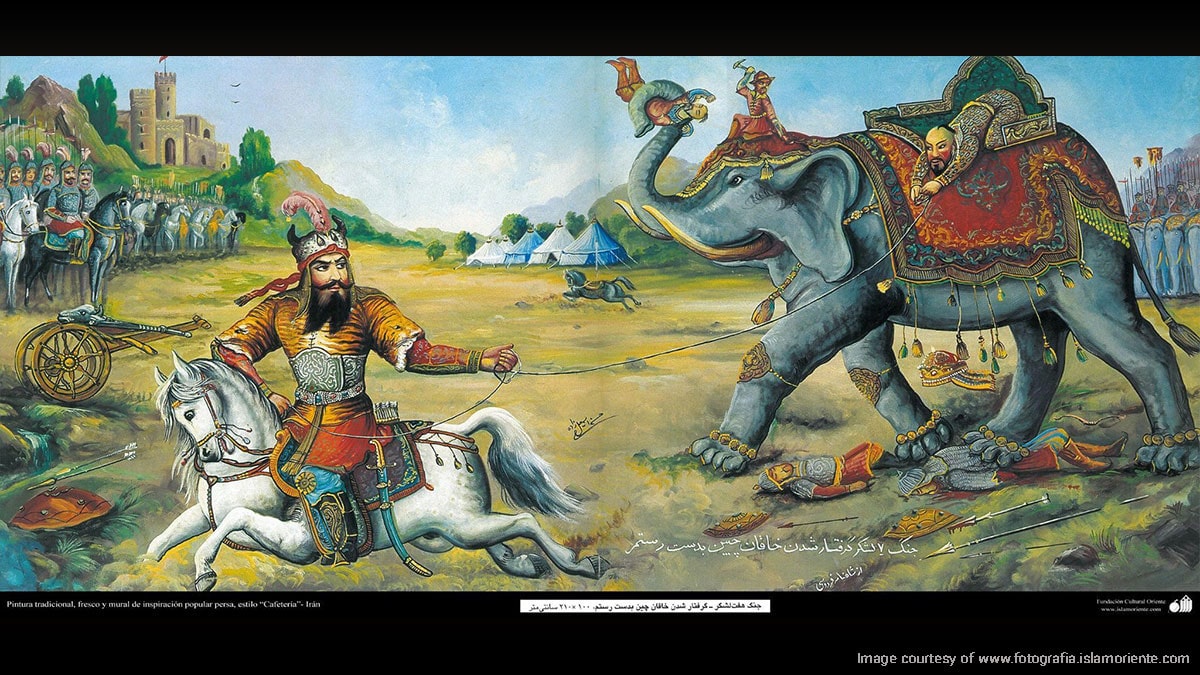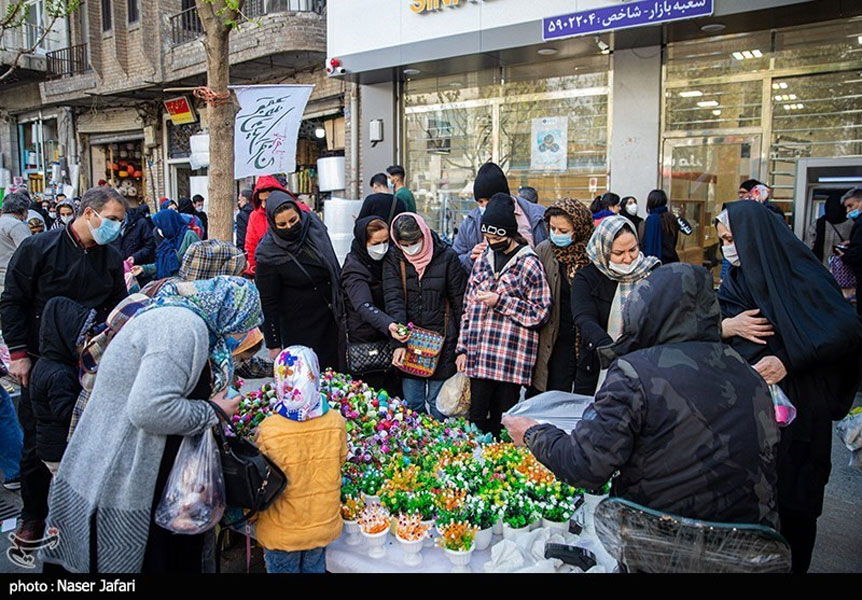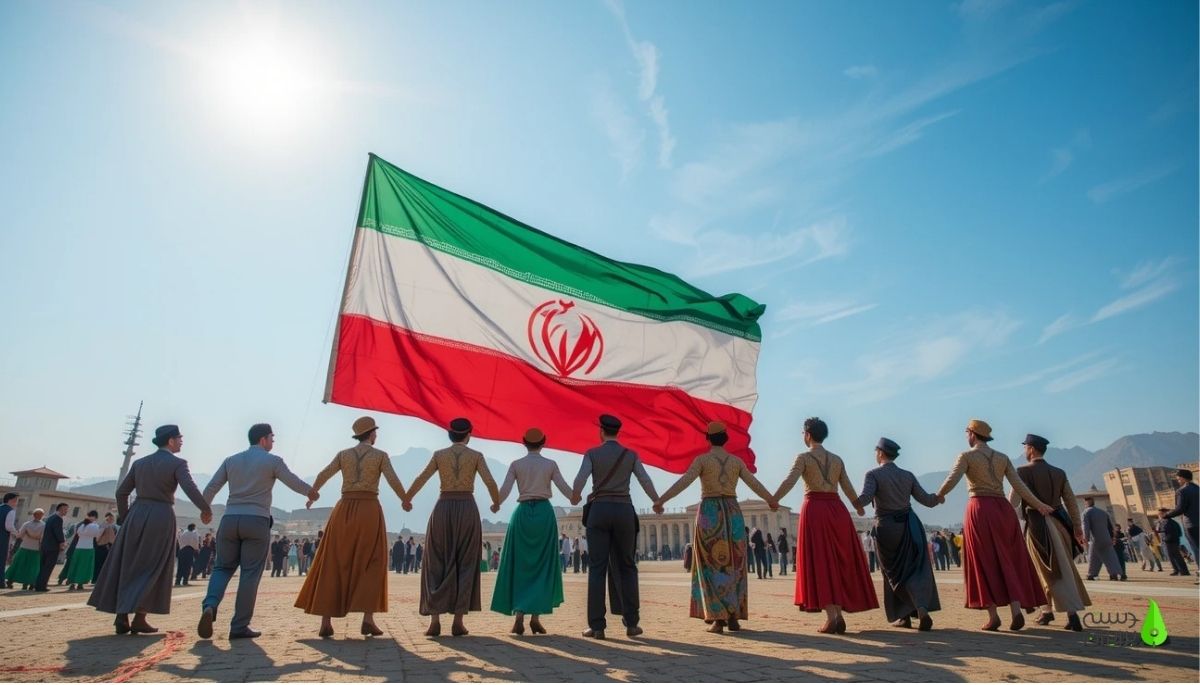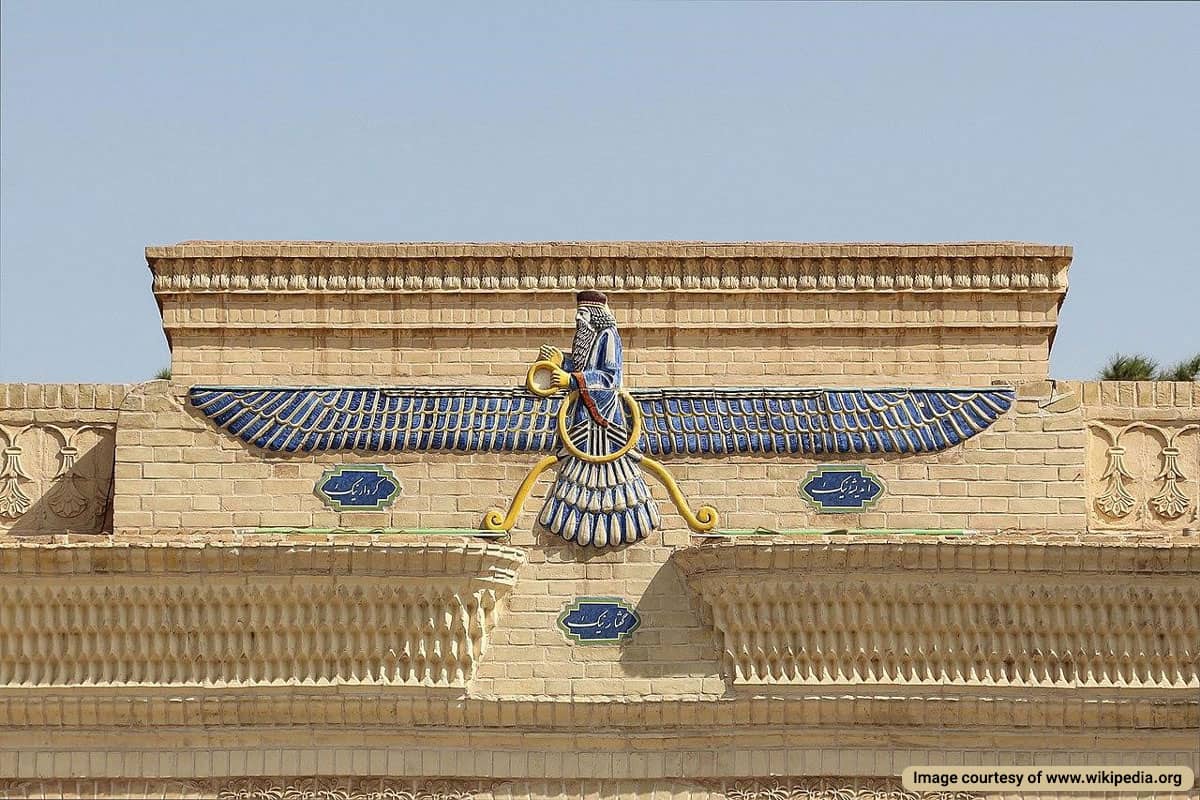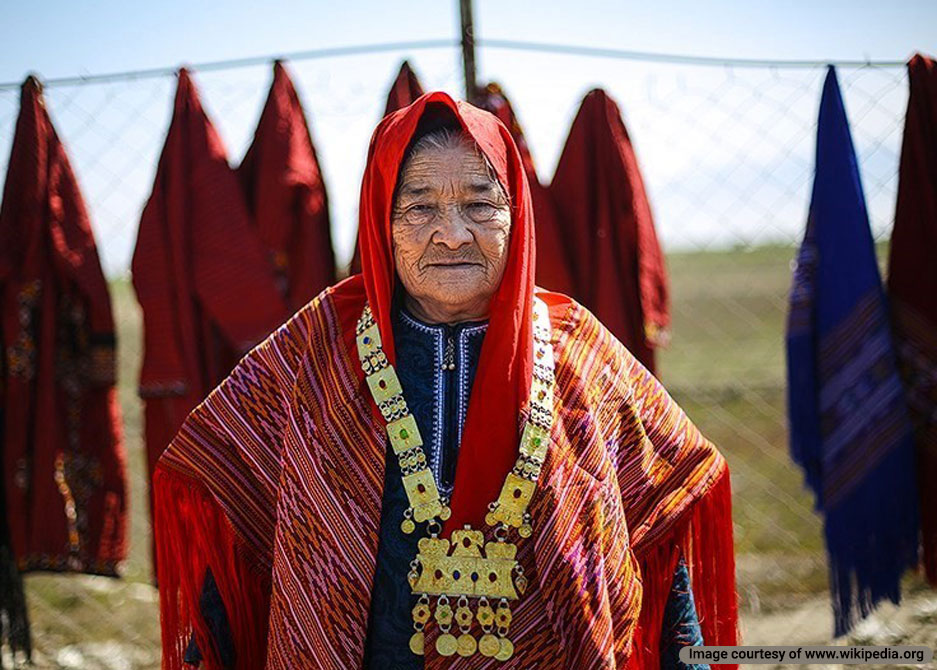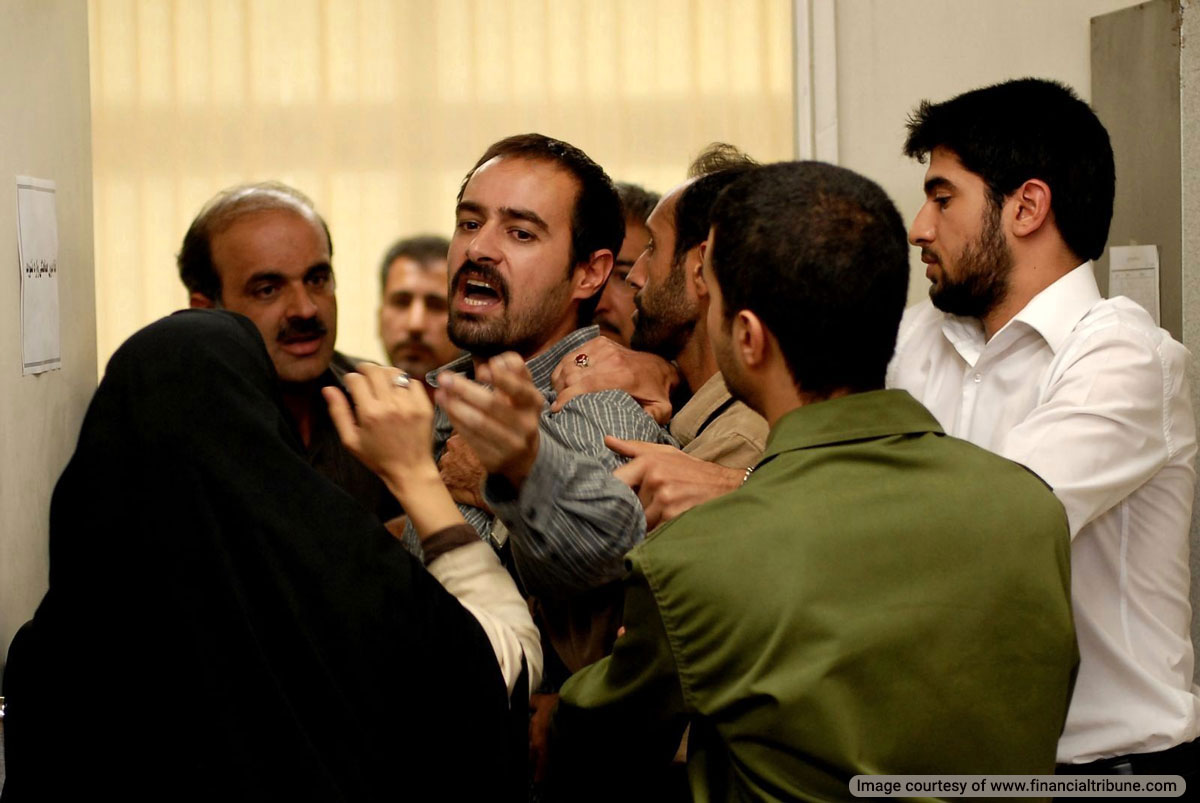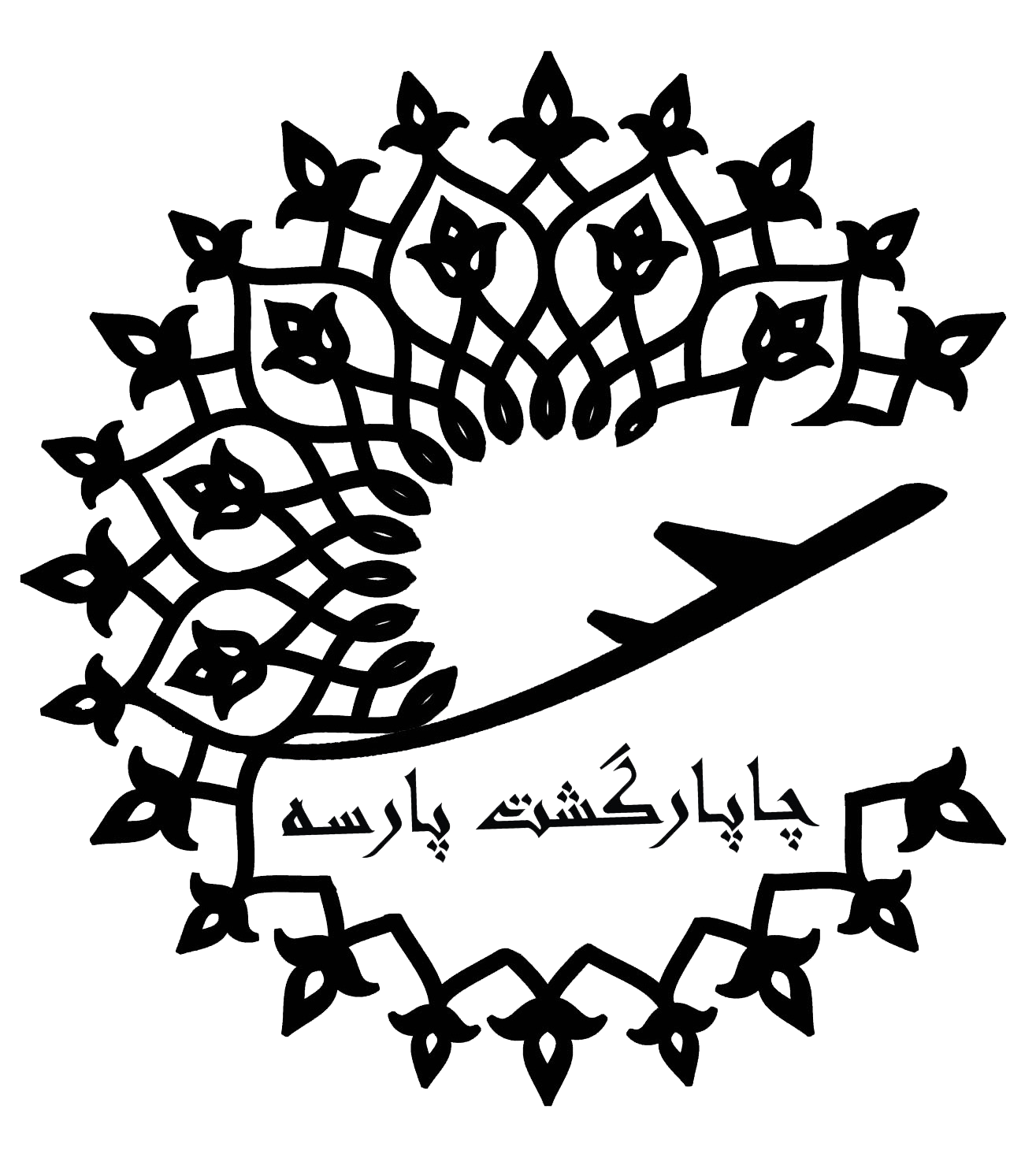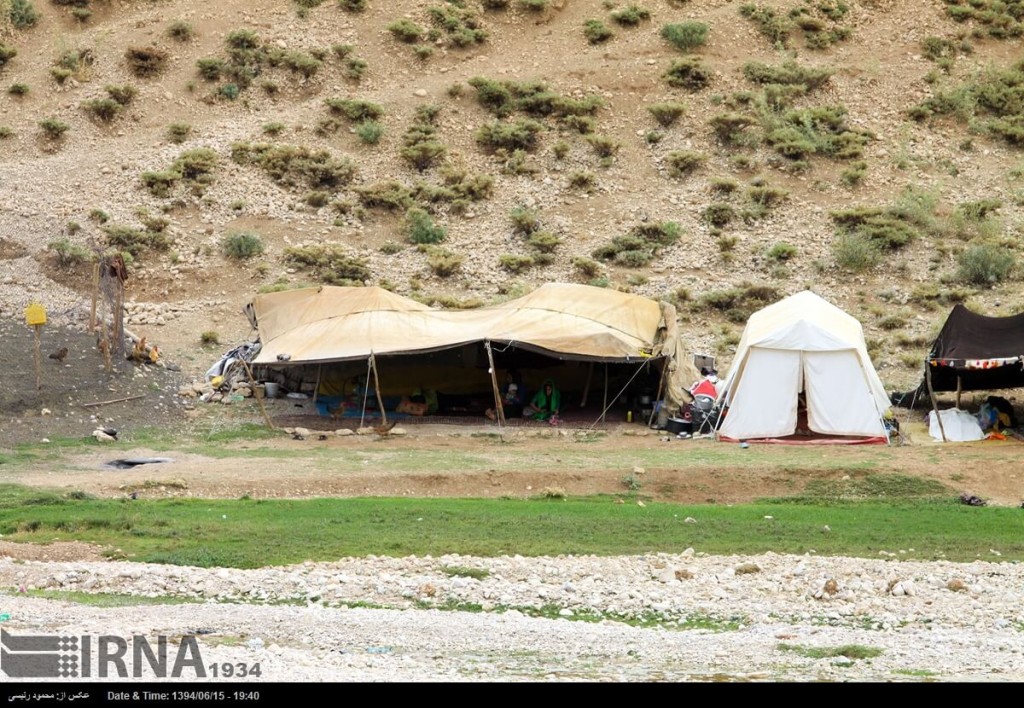
Migration is a way of life for nomads in which herding cattle is the basis of economic life. Changing of location and migrating of human groups are two outstanding characteristics of nomadic life. Nomads of Iran are no exceptions. They are the people who migrate from one place to another with their tribe, family and all their belongings.
In such annual or seasonal migrations, nomads move from their winter resort locations to summer grazing lands with their animals and move back to their winter resort locations again when it gets cold.
How Nomads of Iran Started Their Lifestyle
Migration started many centuries ago. It began with a very simple form, but moving from place to place is still the fixed feature of such a lifestyle.
Researches on the migrating way of life indicate that this phenomenon exists mostly in semi-dried and marginal territories, i.e. in areas where there is not any suitable piece of land for farming like slopes or stony grounds.
There are various theories concerning the causes of such a way of life. Reference can be made to some of them like the increase in population and expansion of agriculture, the economic structure of a given society, social and political situations, and ecological factors.
Two Kinds of Migration
Nomads of Iran follow two kinds of migration:
- Horizontal migration occurs in dry, flat, vast deserts where water and grass can scarcely be found, like in Saudi Arabia‘s deserts.
- Vertical migration occurs in regions with a large difference in altitude where people move from low altitudes to higher ones in search of more favorable weather for their families and their animals, like in Iran.
Major Nomadic Tribes in Iran
The 101 nomadic tribes in Iran migrate across 963,000,000 square kilometers of territory, covering nearly 60% of the country. Their population was estimated to be around 1,200,000 people in 2020. The following are the major nomadic people in the country.
Bakhtiari People
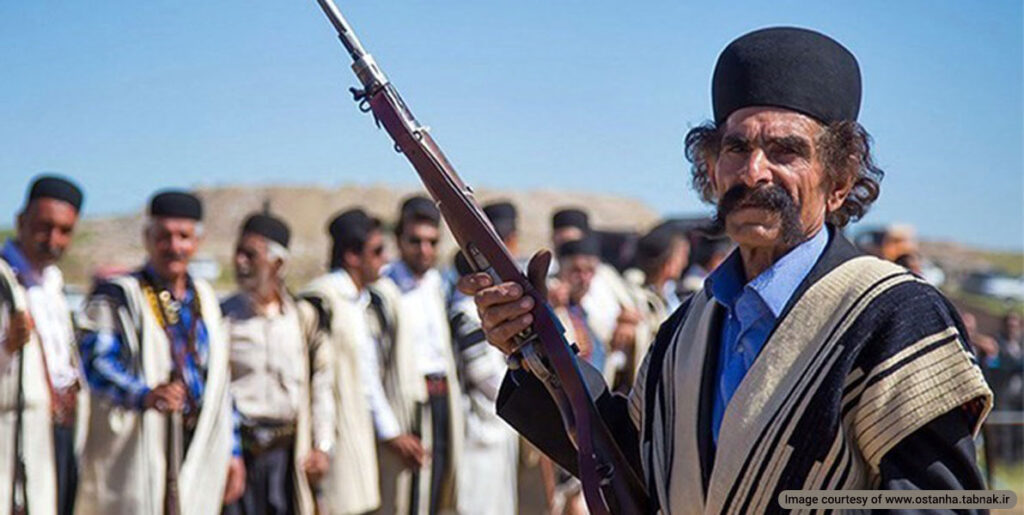
The Bakhtiari are one of Iran’s most prominent and well-known nomadic groups. They are considered part of the Lur ethnic group. They reside mainly in the southwestern provinces, where they are known for their resilience and strong sense of community. Their rich cultural identity is expressed through traditional festivals, music, and the iconic black tents they use during their migrations.
Region
The Bakhtiari people primarily live in the Chaharmahal and Bakhtiari, Khuzestan, and Lorestan provinces. During the winter, they migrate between their summer pastures in the Zagros Mountains and their winter pastures in the lowland plains of Khuzestan.
Population
The Bakhtiari population is estimated to be around one million people, making them one of the largest nomadic groups in Iran. They have a strong tribal structure, with various clans forming the larger Bakhtiari community.
Bakhtiari Language and Traditions
They speak the Bakhtiari dialect, a sub-dialect of the Luri language. The Bakhtiari have a rich oral tradition, including epic tales, poetry, and songs. They celebrate various traditional festivals, with ceremonies often involving music and dance. Their traditional clothing is colorful and distinctive, and their black tents, known as “Beh-rez,” are iconic symbols of their culture.
The Bakhtiari social structure is based on a combination of tribal and family loyalties, with leaders known as “Khan.” Their seasonal migrations are among Iran’s most protracted and arduous, reflecting their resilience and adaptability. The Bakhtiari are also known for their historical significance in Iranian politics and their high degree of freedom for women.
Baloch People
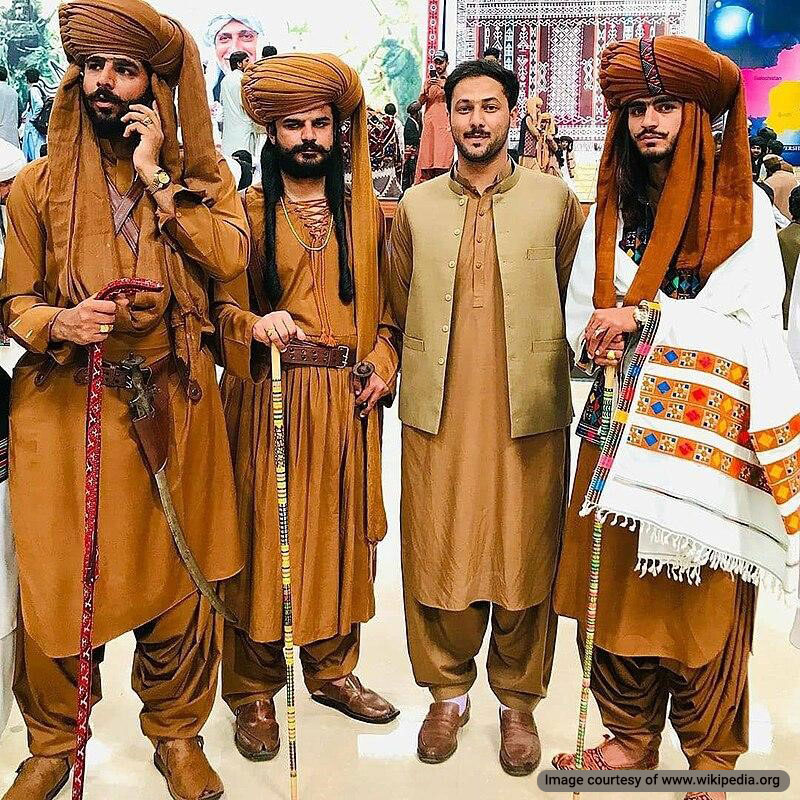
The Baloch people inhabit the arid southeastern region of Iran and are distinguished by their resilience and adaptability. Their distinct language, colorful embroidered clothing, and rich musical traditions highlight their unique cultural heritage. They are also found in Pakistan and Afghanistan.
Region
The Baloch people primarily live in southeastern Iran’s Sistan and Baluchestan provinces. This area is characterized by its arid desert environment, which has shaped their nomadic lifestyle.
Population
The Baloch population in Iran is estimated to be around 1.5 million people. They are also found in neighboring countries such as Pakistan and Afghanistan, forming a significant transnational ethnic group.
Baloch Lanugage and Traditions
Balochi is a northwestern Iranian language. The Baloch people, mainly Hanafi Sunnis, have a distinct religious and cultural identity. They are known for their rich musical and folklore traditions, elaborate embroidery, and colorful clothing. Traditional dress includes ornate jewelry, an essential aspect of their cultural expression.
The Baloch are skilled horsemen and are famous for their camel breeding. Despite modernization, many Balochs continue to uphold their nomadic traditions, which have been passed down through generations. Their resilience and adaptability in harsh desert environments are notable, and their strong tribal structure is crucial to their social organization.
Qashqai People
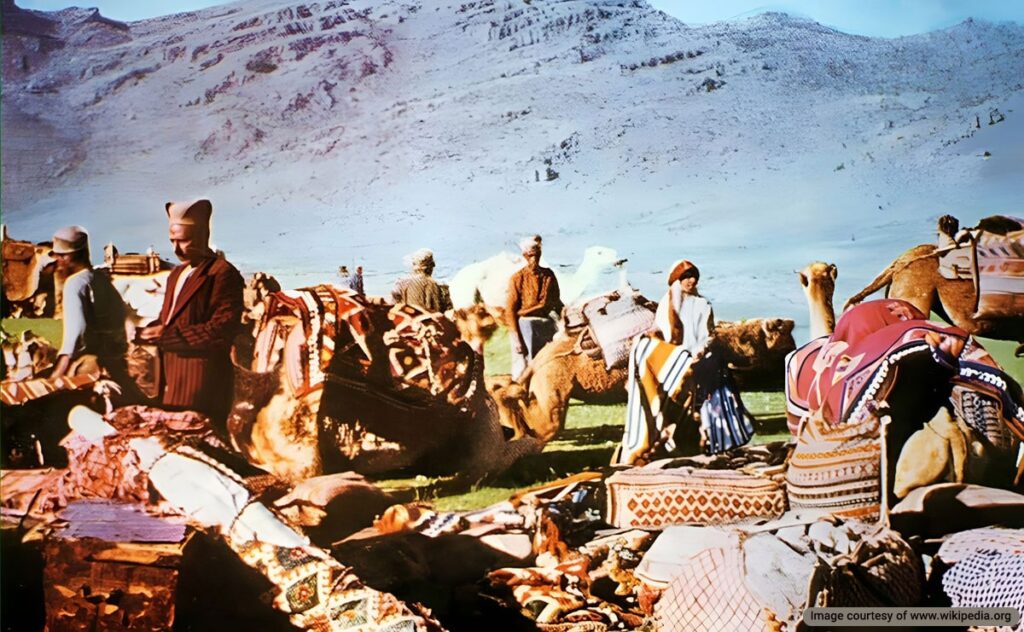
The Qashqai people are a nomadic alliance of tribes with Turkic, Luri, Kurdish, and Arab populations. They are primarily of Turkic descent, and it is believed that their ancestor was Hulegu Khan, who arrived in Iran during the 11th-century migration of Mongol tribes.
Region
The Qashqai people were mainly located in the Fars province. However, their territory expanded to nearby regions, including Isfahan, Khuzestan, Gachsaran, and Bushehr.
Population
In 1963, the Iranian government declared that this tribe no longer officially existed, as its policies had driven it into cities and an urban lifestyle. However, it still exists in smaller tribes and has mixed with other nomadic people.
Aimaq People (Chahar Aimaq)
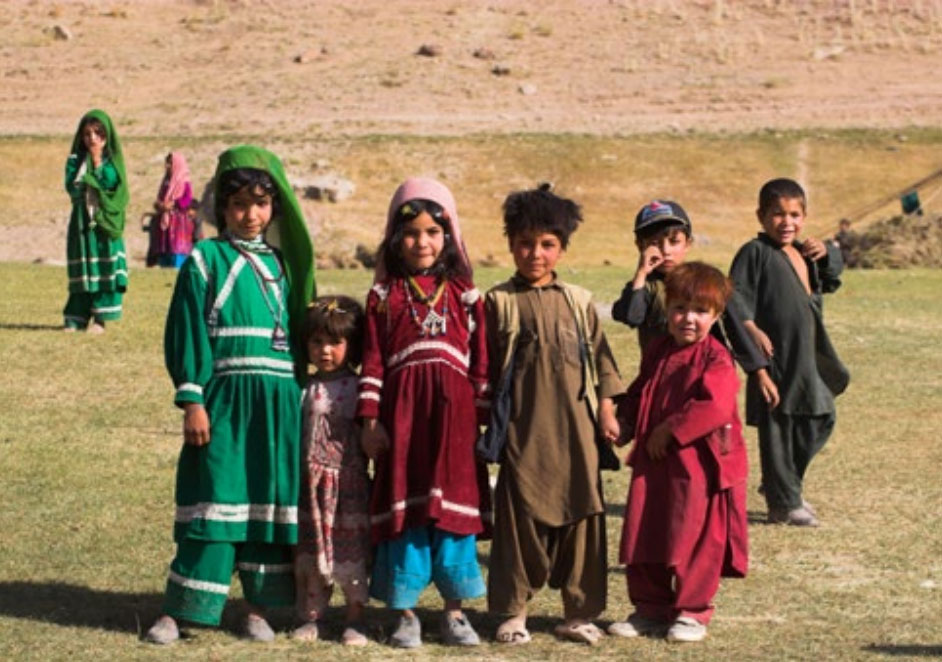
The Aimaq are a Dari-speaking nomadic tribe primarily found in eastern Iran’s central and western highlands, which include Afghanistan and Turkmenistan. In Iran, they are known as Chahar Aimaq (The Four Tribes), consisting of Jamshidi, Hazara Aimaq, Firuz Kuhi, and Taymani. This nomadic population formed in the 15th century through a combination of several tribes and did not share any specific ancestors beyond that point.
Region
The various Aimaq tribes are near Torbat-e Jaam, Taybad, and Khaf. Their nomadic lifestyle is well-suited to the mountainous terrains, which provide the necessary grazing lands for their livestock.
Population
The Aimaq population is estimated to be around 120,000 in Iran. Their numbers fluctuate due to their nomadic way of life, which involves seasonal migrations in search of better pastures. The four major Aimaq tribes include:
- Jamshidi: Mostly settled in the Kushk area in northern Herat, Afghanistan, the Jamshidi are considered an Iranian population. They claim to be related to Jamshid Pishdadi; some call them the Kiani people.
- Hazara Aimaq: This tribe is comprised of the Hazara ethnic group in Afghanistan. They are mainly found in Ghal’e No in Badgheys Province.
- Firuz Kuhi: Their main territory is the northern banks of the Marghab River. Some believe they originate in the Firuz Kuh region of Iran, but the trible themselves believe they are related to the Ghurid dynasty, a Persianate kingdom of Tajik origin. The overall population (in Iran and beyond) is around 100,000.
- Taymani: The Taymani territory is the valleys where the Harirud River flows in the Ghur province of Afghanistan. Some anthropologists speculate they originate from Chinese migrants, Ghurid remnants, from the Baluchistan region, or ancient Aryan tribes.
Aimaq Language and Traditions
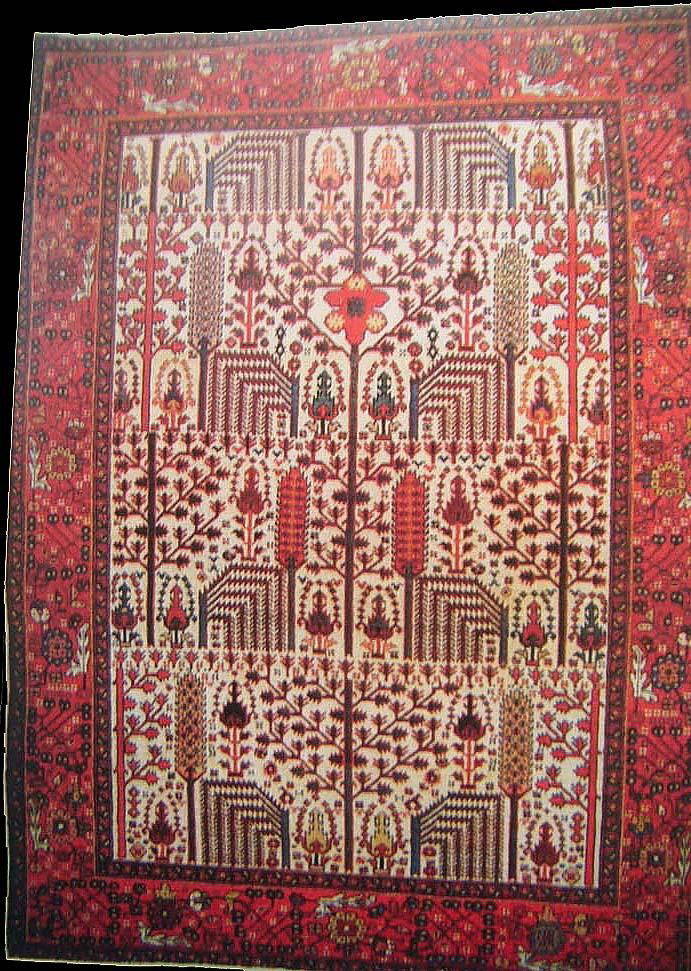
The Aimaq people speak the Aimaq dialect based on Modern Persian. They have a rich oral tradition, including storytelling, music, and dance. They celebrate various cultural festivals and have a strong tradition of hospitality. Traditional crafts, especially hand-woven rugs and kilims, are highly prized for their intricate designs and craftsmanship.
The Aimaq are divided into several sub-tribes, each with its dialect and customs. Their economy is primarily based on animal husbandry, with sheep and goats being the primary livestock. Their nomadic and semi-nomadic lifestyles involve moving with the seasons to find the best grazing lands for their animals.
Basseri People
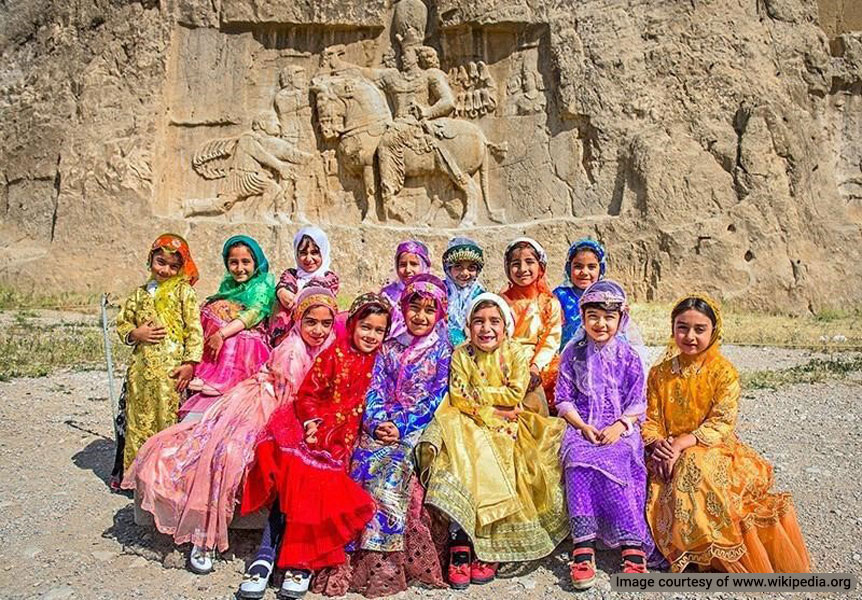
The Basseri, part of the Khamseh Confederation in southern Iran, is one of the oldest nomadic tribes in the country. They are known for their seasonal migrations with livestock. Their skilled weaving and rich oral traditions deeply connect to their nomadic way of life and cultural heritage. The Basseri are the descendants of the Ancient Pasargadae tribe.
Region
The Basseri people live primarily in the Fars province in southern Iran. They migrate seasonally with their flocks of sheep and goats, moving between summer and winter pastures. Their main territories are Pasargad in the summer and Karian in the winter.
Population
The Basseri population is estimated to be around 20,000 to 30,000 people. They are part of the larger Khamseh tribal confederation, which consists of five tribes.
Basseri Language and Traditions
They speak an untouched dialect of Persian, which includes many ancient words from Middle Persian. The Basseri have a rich oral tradition, with stories and songs that preserve their history and cultural heritage. They are skilled weavers who produce carpets and textiles highly valued for their quality and intricate patterns. Their traditional way of life revolves around their livestock, which provides them with food, clothing, and economic stability.
The Basseri’s social structure is organized around extended family units, and decisions are made collectively within the clan. They maintain a rich cultural heritage, and their daily lives are deeply connected to their migratory lifestyle. The Basseri also has a history of political influence within the region, often interacting with other nomadic tribes and settled communities.
Kordshuli People
The Kordshuli are an independent nomadic tribe in southwestern Iran that dates back to before the Parthian Empire. Despite their name, they are not of Kurdish origin. Their name means nomadic Shulis. Kurd means nomadic, and Shuli refers to the native people of the Shul mountains.
Region
The Kordshuli primarily inhabit the southwestern region of Iran, mainly the Fars province. FTheymigrate with their livestock between summer and winter pastures using a well-established route.
Population
The Kordshuli population is estimated to be between 200,000 and 300,000. They are part of the larger Qashqai confederation, known for its strong tribal structure and cultural cohesion.
Language and Traditions
The Kurdshuli people, who speak Luri, are related to the Qashqai tribe. Their Shuli dialect is derived from the Middle Persian language. They are majority Shia Muslims.
The Kordshuli people have a vibrant culture that includes music, dance, and storytelling. They are expert weavers who produce carpets and kilims renowned for their quality and intricate designs. Their traditional clothing is colorful and distinctive, and their festivals and ceremonies reflect their strong sense of community and cultural identity.
The Kordshuli’s social structure is based on family and clan relationships, with each clan led by a headman. They have a strong sense of community and cultural identity, reflected in their traditional clothing, festivals, and ceremonies. Their migratory lifestyle is central to their way of life, and they have adapted to various environmental challenges over the centuries. The Kordshuli also have a rich oral tradition, with stories and songs that preserve their history and cultural heritage.
Gypsies vs. Nomads of Iran
They are wandering in small and large groups in many parts of the world. Although we do not precisely know their history, it seems that they originated in India. The color of their skin and their accent make us think so. In Iran, peddling is their way of life. Gypsies also make metal tools like knives and sickles and repair some farming tools. They often pitch tents near villages and exchange goods for goods and, at times, for cash with villagers.
Some of the gypsies are wandering musicians appearing to people while harvesting or at weddings and skillfully playing a few pieces of music, making them happy and earning some crops and going away.
They are not dependent upon lands or animals and have no clear plans for migration. Sometimes, they do not go back to where they have started traveling from. Nomads of Iran fit completely within the definition of who such people are.
Relation between Migrant & Settled People
The differences between villagers and nomads’ ways of life have frequently ended in quarreling and at times in dependence upon each other. Nomads could have been a major threat to villagers and could have been an essential factor to satisfy their needs.
Migrants, Semi-Migrants & Settled Tribes
Some tribes are merely tent dwellers and move in search of grazing lands for their herds. Other tribes are both living in tents and in some specific buildings. Agriculture is another minor thing they do for their needs. The third group has gone through previous stages and has settled at last as a result of the decline in traditional cattle herding.
Large & Small Tribes
Large tribes of Iranian nomads are known as Turkmen, Shahsavans, Lurs, Bakhtiaries, and Qashqaies. Others are considered small tribes who had to settle in the past. Many of them have no other choice than to start migrating again. Of course, they have their own reasons for this.
Nomads in History
In many cases, nomads have had key roles in wars with enemies. Sometimes, they were united as an independent army or an auxiliary force. The history of Iran witnesses many cases of their decisive assistance in defending the country.
The Social Structure of Nomadic Societies
As a unit of social life, a tribe has many duties to accomplish. A system is needed to connect a family to the whole tribe. This tribal organization is vital to integrate a tribe from within itself.
One of the subdivisions of a tribe is a “family”. The emotional links functioning inside and outside the families are links called “ethnic solidarity”, which is much stronger than among settled families.
In nomadic societies, a tribal family with its own definition and functions is distinguished from what we know, nowadays, as a family in modernized societies. A tribal family cannot mean anything without a wife and cannot perform its duties. In such a family, the whole family matters, not every individual member. This is the survival code of a tribal family.
“Polygamy” is sometimes seen among tribes. You may find this among the nomads of Iran too. Another wife is another source of assistance the head of a family needs to manage the broadened responsibilities. Of course, this is how it is described by tribal men, but there should be other reasons for this phenomenon too.
Job Description in Nomadic Families
A husband, a wife and a child are each helping the family’s course of existence to go on. Even children have their own job descriptions from childhood that depend on their sexes. They learn and practice the serious life of being an adult.
Social Structure Classifications
Heads of tribes and guard heads are the wealthiest. Middle-class people are headmen, elders, and similar ranks. The ordinary people are the majority who live hard lives.
Each group has its own different responsibility, property, and characteristics. Sometimes, one can say which class they belong to by looking at the color and appearance of their tents.
Frequently Asked Questions About Iranian Nomads and Nomadic Lifestyle
To find answers to your questions, contact us through this post’s comments section. We will answer your questions as soon as possible.
What is the definition of nomads and who are called nomads?
Nomads perform seasonal migration with their tribe and family transporting all their belongings and livestock to access pastures and avoid extreme heat or cold. The migration route of nomads between Yaylak (for winters) and Kishlak (for summer) is called Il-Rah (the path of tribes).
What are the characteristics of migration and nomadic life?
In nomadism, traditional animal husbandry is the main economic activity and source of livelihood. Seasonal migration is another characteristic of nomadic life. Every year, at the beginning of the summer season, nomads move from temporary winter dwellings to summer pastures, and when the weather gets cold, they return to winter dwellings.
Why have people chosen a nomadic life from the past to the present?
The nomadic lifestyle is often practiced in semi-arid and borderlands. Reasons such as population increase and agricultural development, economic divide in society, cultural or political issues, and ecological factors are the main causes of this phenomenon.
How is the social life of Iranian nomads classified?
In the nomadic society, the chiefs of a tribe (Sheikh) are the wealthiest social group, their subordinates form the middle class and ordinary people are the majority who have working-class lives. Each group in this society has different characteristics and responsibilities. In some Iranian nomadic communities, you can determine the residents’ social class by the color and appearance of nomadic tents.
Do Iranian nomads have more than one wife?
Some Iranian nomads have more than one wife. In these societies, it usually means having another person to help the head of the family handle his expanding responsibilities or form political ties with another tribe.



